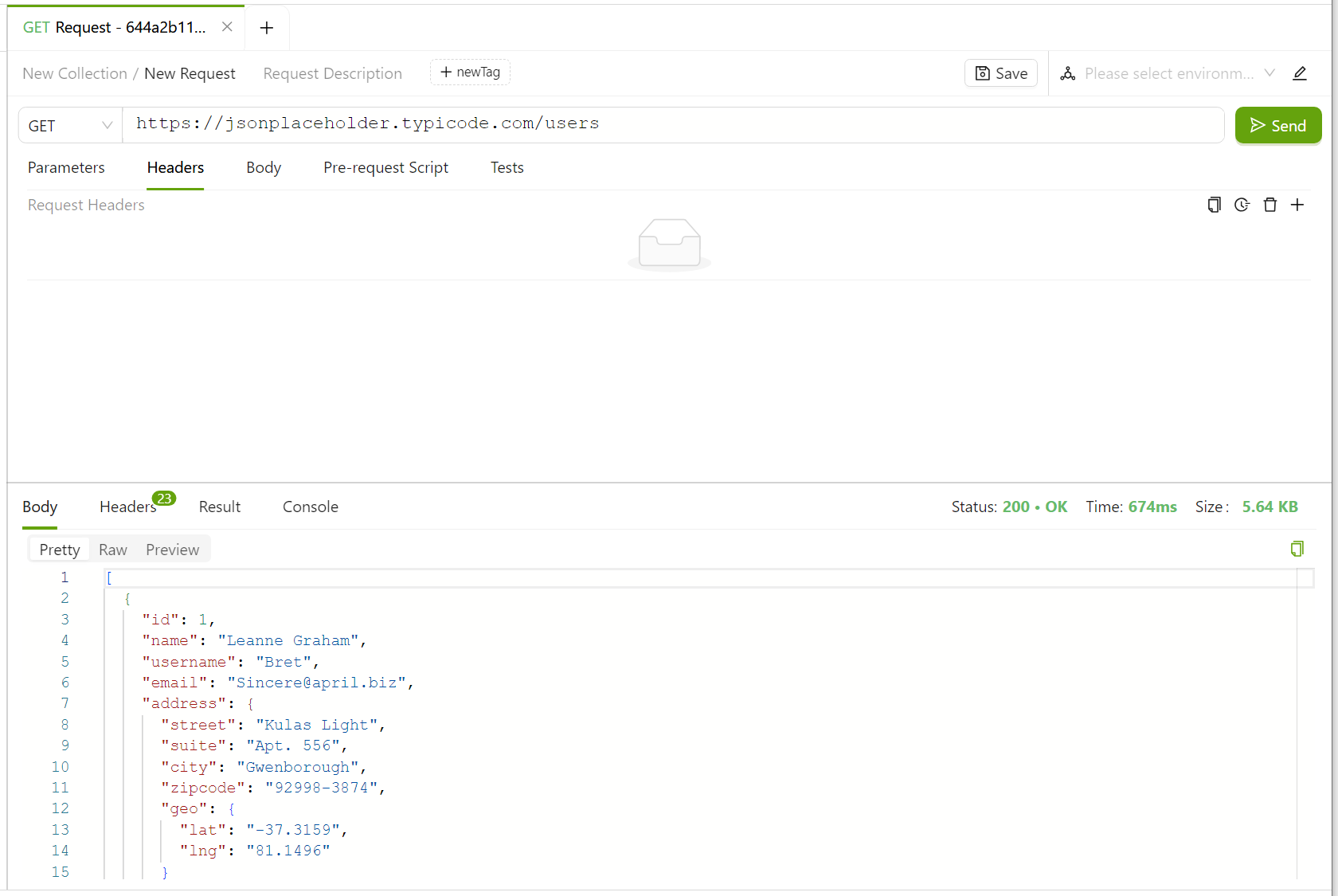Get Started
Once the AREX service installation is complete, you can access the AREX Visualization User Interface through a browser (using Chrome version 89 or higher is recommended):
- If the port configuration has not been modified, access it directly at port 8088 (exposed by Docker Compose)
http://0.0.0.0:8088/ - If you have independently deployed the AREX UI Service and haven't modified the port, you can access it on the default port 8080 using the following URL:
http://0.0.0.0:8080/ - If the port has been modified, access it using the modified port.
First-time Login
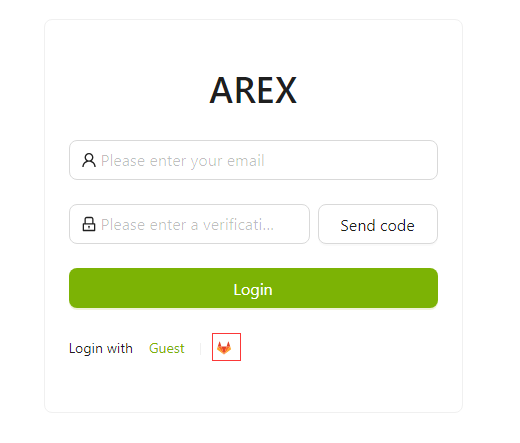
Email Login
For the first-time login, you need to enter your email. After receiving the verification code in the email, click Login to complete the login process.
Guest Login
You can also click the Guest link to log in directly. However, as a guest, you will not have team collaboration capabilities (i.e., case sharing functionality), and you cannot create applications.
Gitlab Login
If Gitlab Login is configured, you can simply click on the Gitlab logo to log in.
Chrome Extension Installation

Note: Before using, you need to install the Chrome extension according to the browser prompts to remove browser cross-origin restrictions.
In the redirected page, select Add to Chrome to download the extension.

If you cannot access the Chrome extension, you can download it locally through Release.
Download arex-chrome-extension.zip to your local machine and unzip it.

Open the Chrome browser and enter
chrome://extensions/to go to the extensions page. Click on the top right corner to select developer mode. Then click Load unpacked and select the folder you just unzipped.
The installation is complete.
Interface Composition
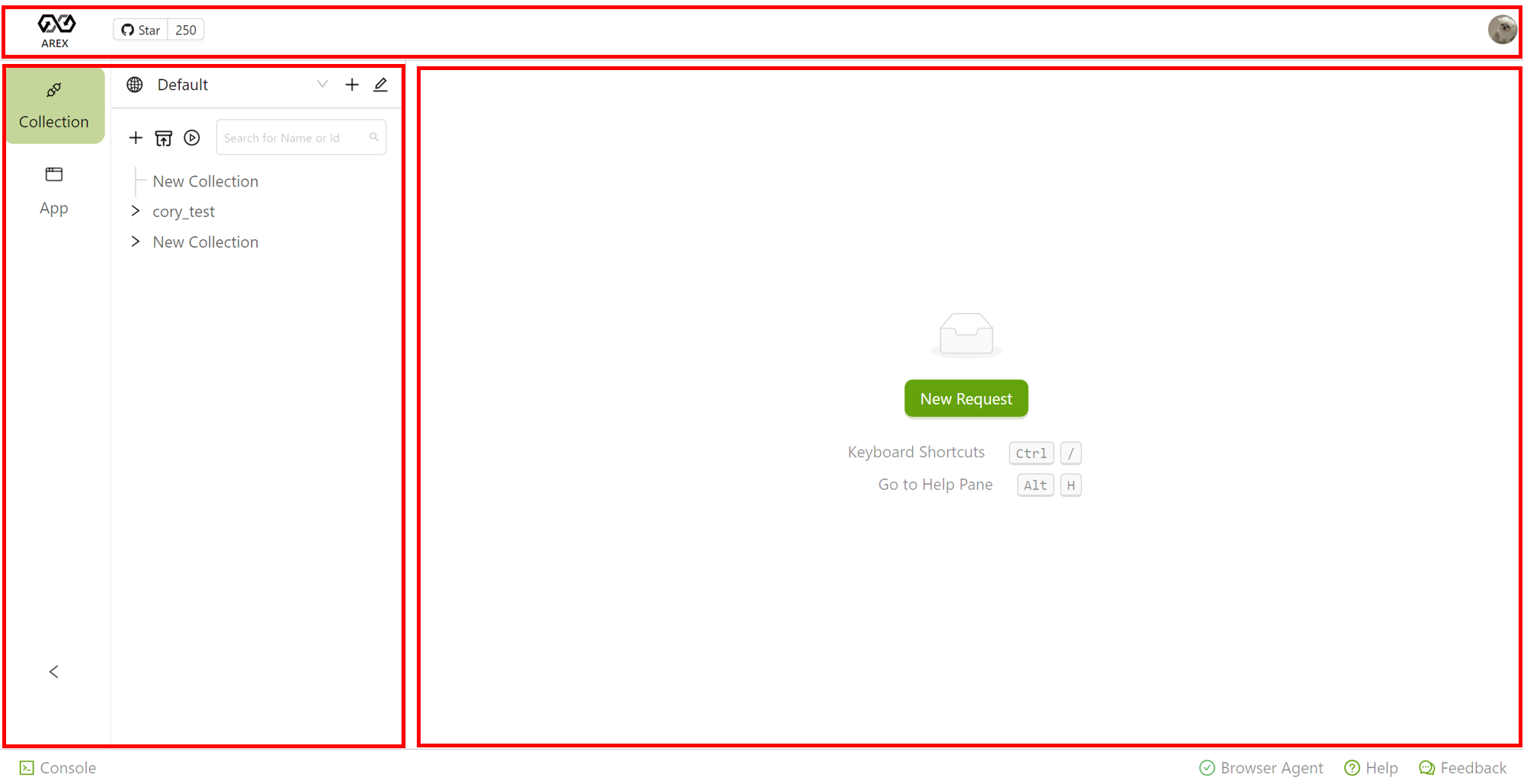
The AREX frontend page mainly consists of three areas: header, menu bar, and workspace.
Header
Clicking on the profile icon in the top right corner of the interface:
- Setting: Switch between dark/light mode, Chinese/English mode, upload avatar, etc. For traffic desensitization operations, see -> Traffic Desensitization Configuration.
- Logout: Log out of the current account.
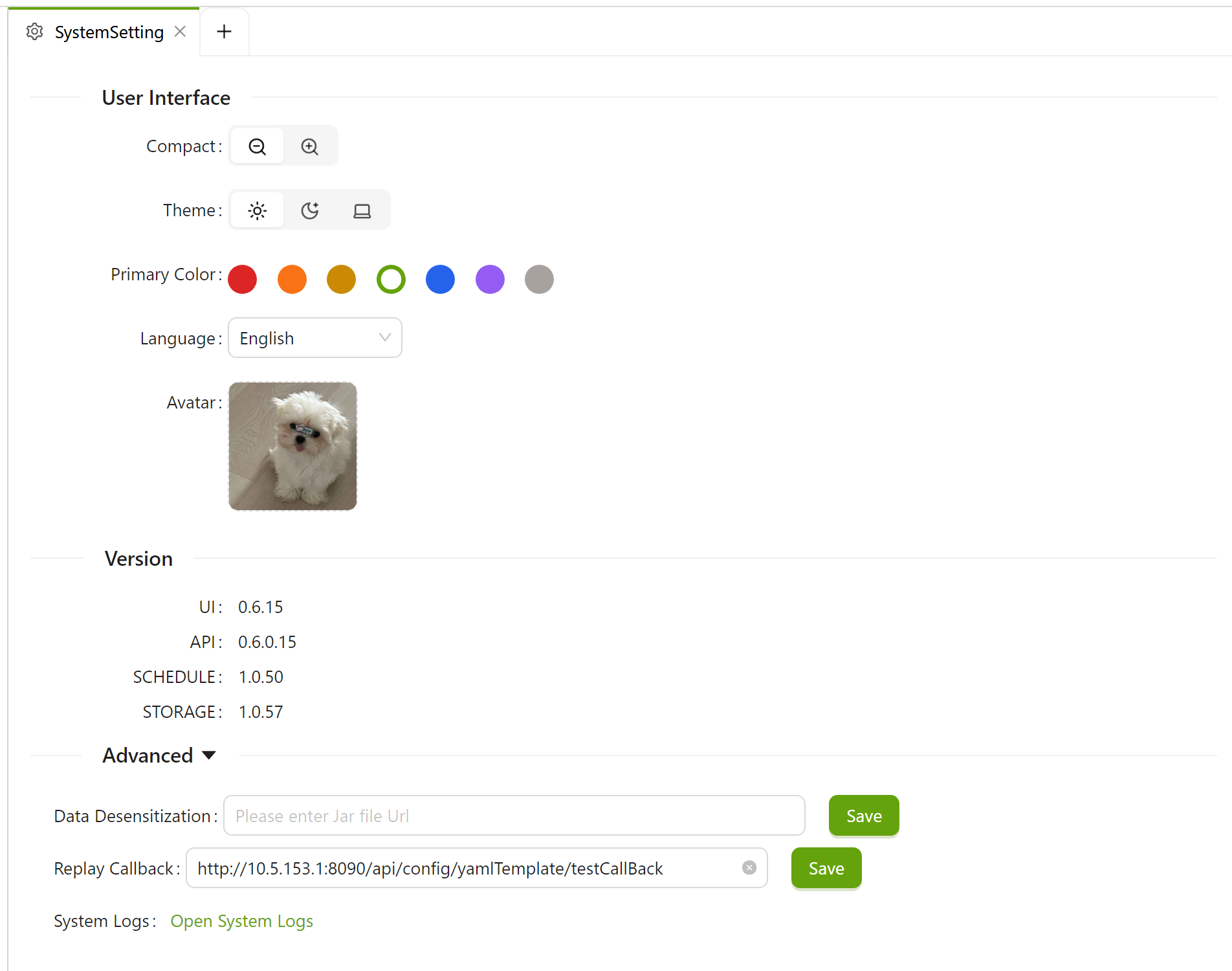
Menu Bar
 Workspace:
Workspace:- Click on the dropdown menu to switch workspaces; click the + on the right to create a new workspace;
- Click the
 icon to set the current workspace.
icon to set the current workspace.
Collection: View regular test cases and comparison test cases.
+: Create a new request collection.
Import/Export: Import case collections (currently only supports Postman format) into AREX, or export AREX cases.
 Batch Run: Execute multiple test cases in batch.
Batch Run: Execute multiple test cases in batch.
App: View and create applications, conduct replay testing.
Workbench
The Workbench is the main area for interface testing, playback testing and other operations. The tab bar allows for quick management of various requests, collections, and playbacks. In the top right corner, you can quickly select an environment.
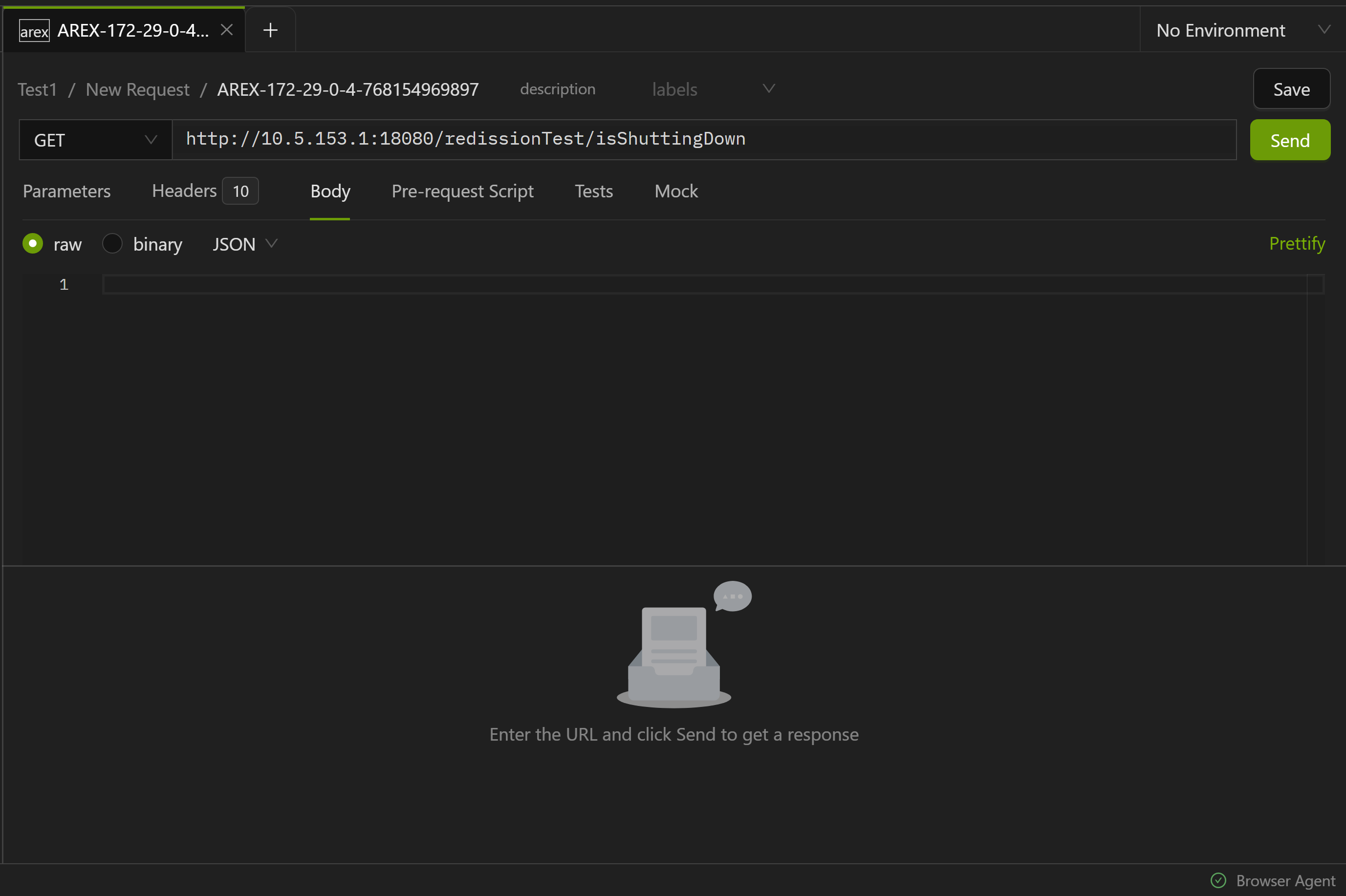
Switching Environments
As needed, you can quickly switch to the environment you need in the top right corner of the page. By selecting the appropriate environment, you can access the variables in that environment.
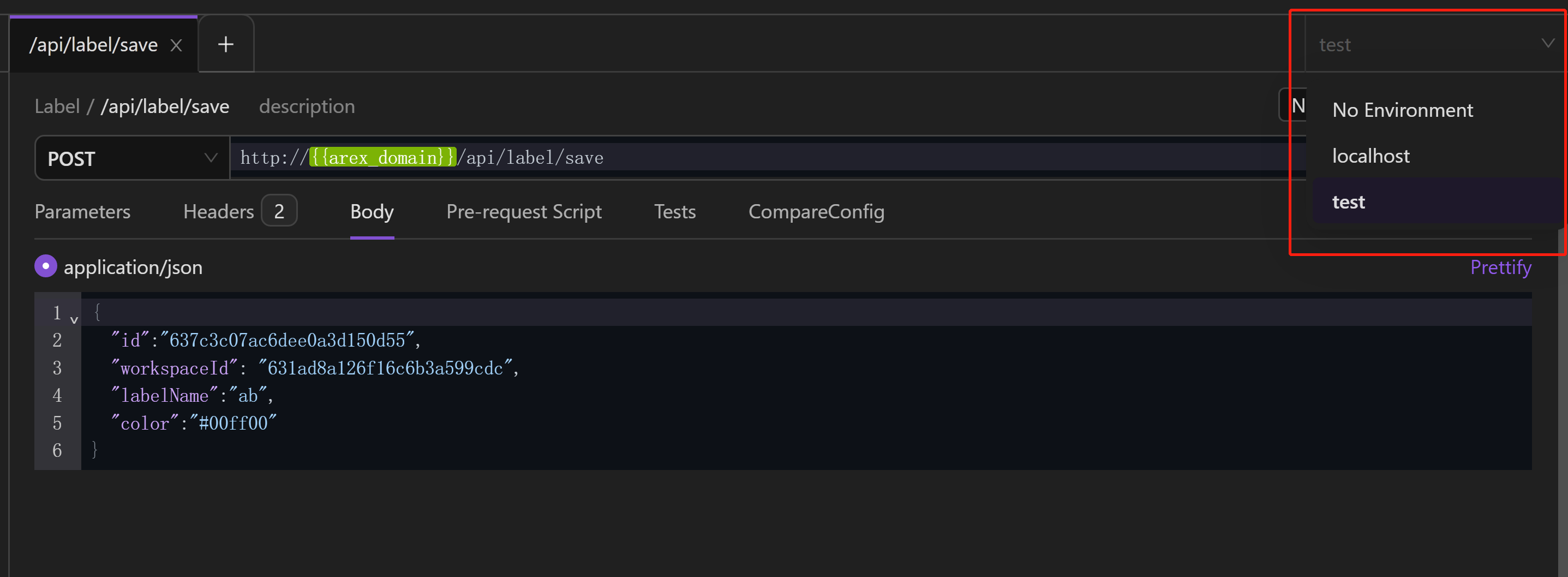
Creating a New Collection
By creating a collection, you can group various requests for better management.
Click the Create new collection button in the Collection section of the left menu bar to create a new collection:
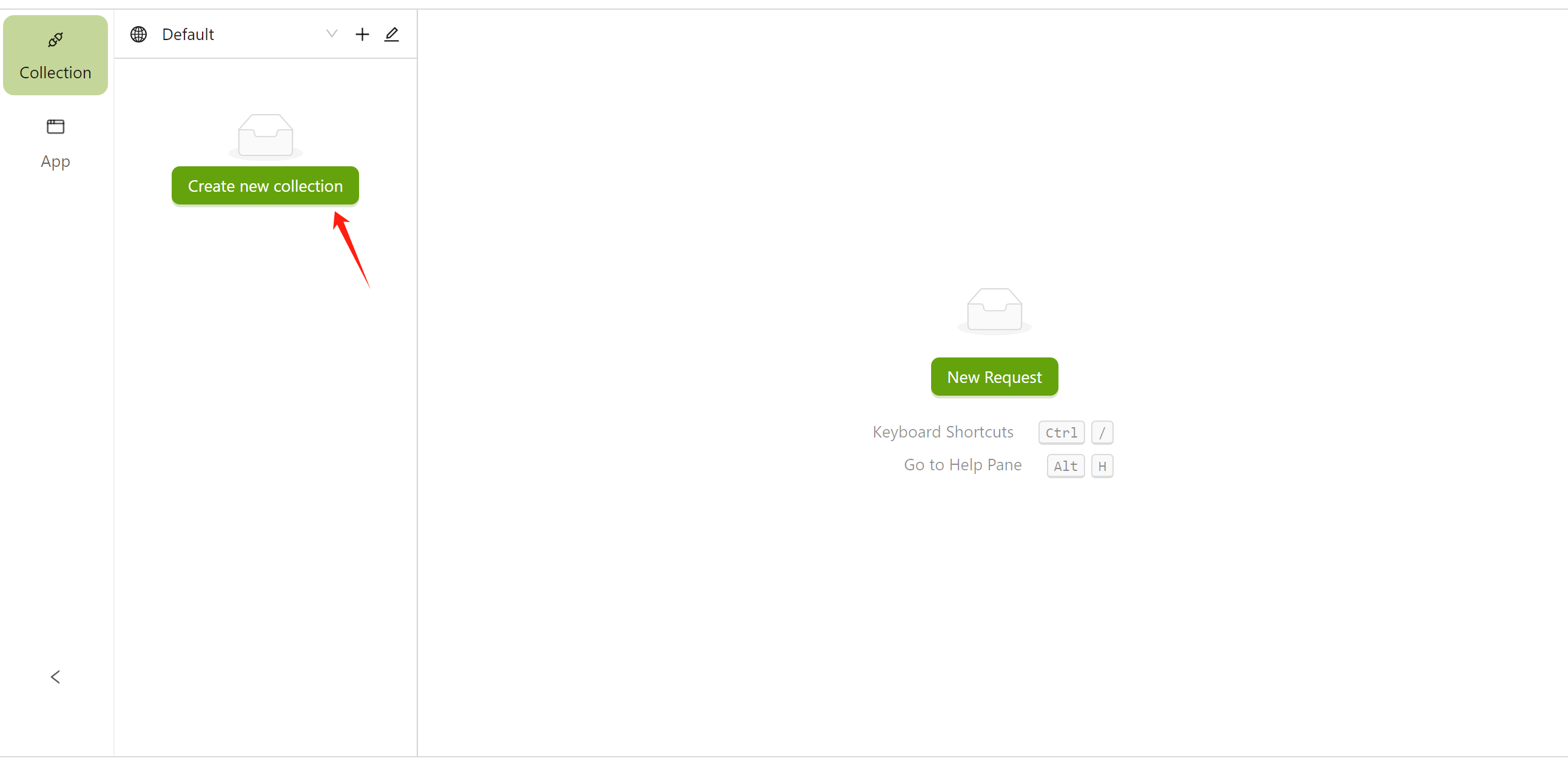
After creation, you can manage the collection in the left menu bar. You can also add sub-collections/folders under the collection.
Creating a New Workspace
Upon first login, you will enter the default workspace. You can create different workspaces for personal use or invite your team to collaborate in your workspace to manage Collections, share Environments, etc.
Click the "+" icon in the top right corner of the menu bar to create a new workspace.
Enter a name for your workspace in the left input box and click the "√" icon to complete creation.
Click the edit button to edit the workspace.
Overview: Administrators can modify the name of the workspace here, view team members, change member permissions, and delete the workspace.
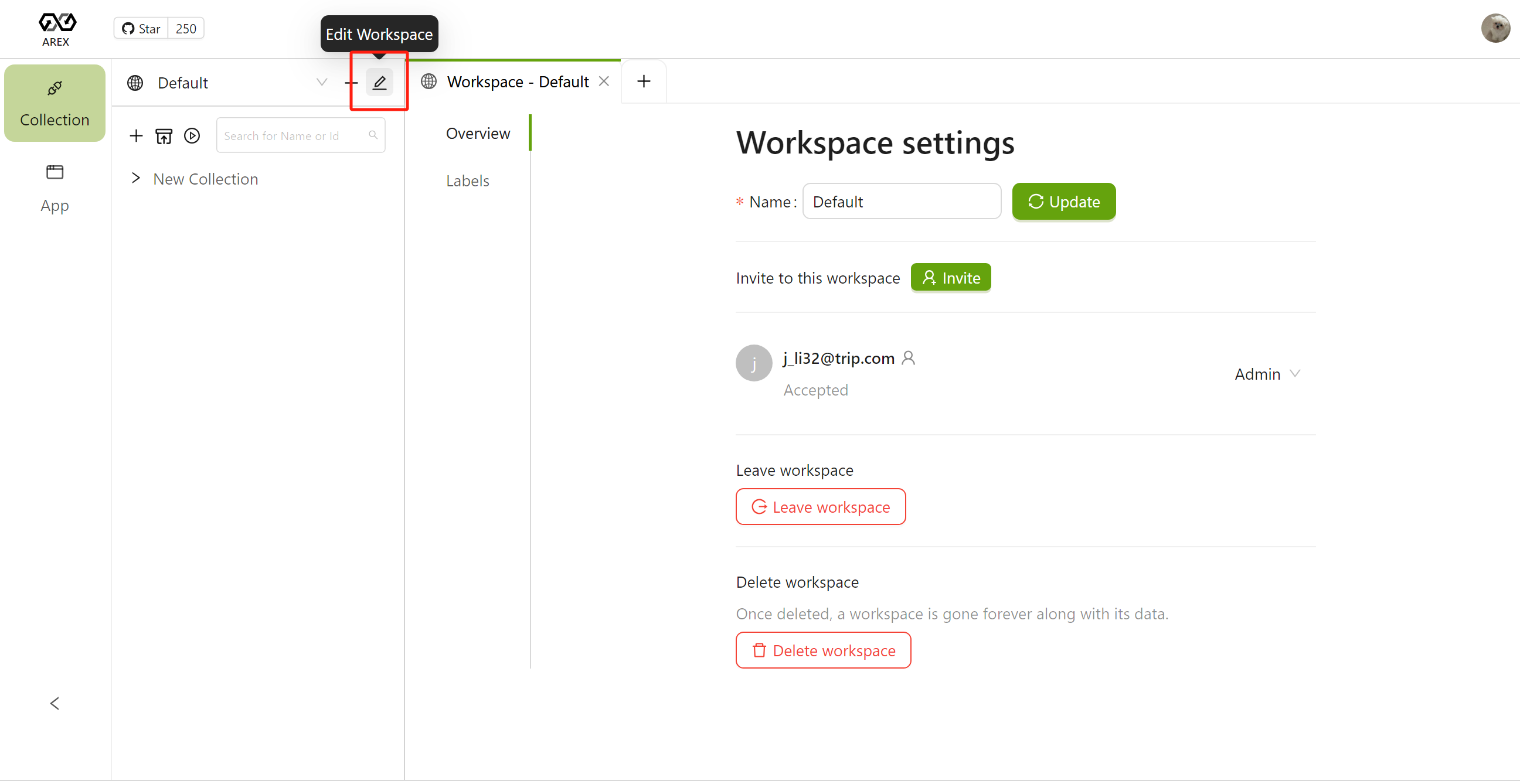
Labels: Administrators and members with editing rights can add test case labels on this page, which helps in managing test cases.

Collaborate with your team
AREX offers collaboration features, allowing you to invite others to join your workspace for online collaboration. Members of a workspace can share environments, test collections, and test cases in Collection. To invite members to a workspace:
Switch to the workspace where you want to collaborate, located in the top left corner.
Click the workspace edit button and invite your team members to the current workspace via email. Enter their email address, set their permissions, and click Send Invites. The invitees will receive an invitation email, and by clicking the link in the email, they can accept the invitation and join the workspace.

Permissions are divided into three types: Administrator (Admin), Editor, and Viewer.
Where:
- Admin: Administrative rights, can manage detailed information in the workspace, delete the workspace, and set permissions for members.
- Editor: Can create and edit resources in the workspace (such as test cases).
- Viewer: Cannot edit data in the workspace, but can view and export resources from the workspace.
Creating a New Request
You can use AREX to create and send interface requests for routine testing.
To create a new request, you can first create a new collection, then select Add Request in the dropdown menu next to the collection to create a new request:
Enter the interface URL and parameters to quickly send a request:
